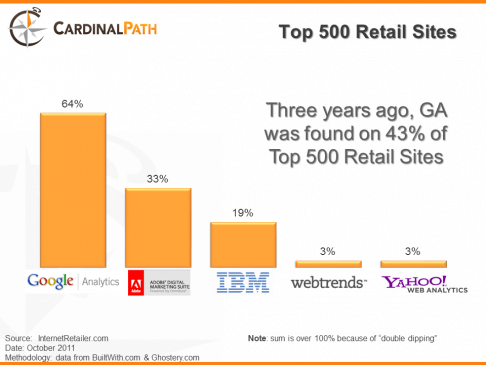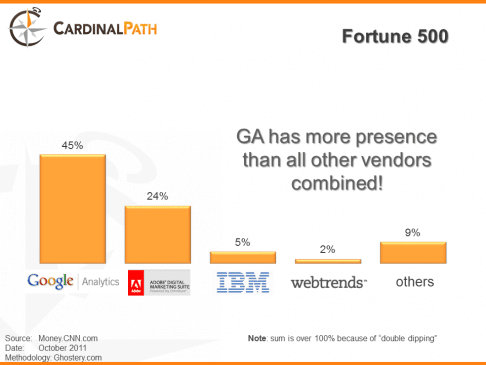The coming of Google Analytics Premium has spurred competition into defensive mode and consultants into speculative gears. The short history of “web analytics” will be remembered as pre & post GA Premium just as a big marker sits on November 2005, date of the free Google Analytics announcement.
I’ve been asking practitioners why they use Google Analytics even though their organization pay for a so called “enterprise solution”. The truth is never – EVER – has anyone said it is because GA is free. The simple reason why Google Analytics is so popular is because it answers analysts needs and expectations today. Think of it, even a free tool that wouldn’t cut it would not survive. GA caters to the vast majority or organizations that have not achieved the highest levels of maturity. It is fast, simple, flexible, reliable and enriched with a strong ecosystem of knowledge, services and ancillary tools. But it’s not perfect either and Google has more engineers then you can think of working to improve it even further. Now, with Google Analytics Premium’s features, even the most demanding organizations can think of it as an option.
State of the web analytics market
For my upcoming digital analytics conference keynote entitled “Mythbusting Google Analytics” I wanted to share stats, facts and takeaways. I looked at the web analytics vendors market shares of the Top 500 Retail Sites and the Fortune 500.


In both cases, Google shows up as the premier solution, surpassing all other vendors combined. In both cases, about 30% of those companies are doing what I dubbed “double dipping” – using a paid solution as well as GA. Over 90% of the Top 500 Retail sites are using web analytics, way more than the 75% of the Fortune 500 – maybe the huge difference stems from retail vs pure branding of very large organizations.
My take
It doesn’t matter if GA is the “de facto” standard, if it boasts the “enterprise ready” badge. It doesn’t matter if other vendors are shown ahead of it in the Forrester Wave Web Analytics Q4’2011 report or if it doesn’t have the longest list of features. It answers analysts needs – and the most successful organizations have figured this out!
















